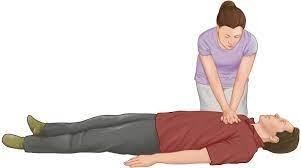An older client is being admitted to a short-term rehabilitation facility after a long hospitalization. The nurse is performing a functional assessment with the client. Which action should the nurse implement?
Encourage the client to lie as still as possible during the assessment.
Question the client about the frequency of falls in recent months.
Assist the client with values clarification about end-of-life care options.
Ask the client how often episodes of sundowning are experienced.
The Correct Answer is B
A functional assessment is an evaluation of an individual's ability to perform activities of daily living (ADLs), which includes tasks such as bathing, dressing, toileting, eating, and mobility. Falls are a common and significant issue among older adults and are a leading cause of injury and hospitalization. Therefore, it is important to assess the client's risk of falling and inquire about any recent falls to develop an appropriate plan of care to prevent falls.
Encouraging the client to lie as still as possible during the assessment is not appropriate as it may not provide an accurate evaluation of the client's ability to perform ADLs.
Additionally, it is important to assess the client's functional status in a way that is safe and comfortable for them.
Assisting the client with values clarification about end-of-life care options is not appropriate during a functional assessment as it is not directly related to the client's ability to perform ADLs.
Asking the client how often episodes of sundowning are experienced is not appropriate during a functional assessment as sundowning is a symptom of dementia and is not directly related to the client's ability to perform ADLs.
Nursing Test Bank
Naxlex Comprehensive Predictor Exams
Related Questions
Correct Answer is D
Explanation
A) Incorrect- Observing for swelling at the fracture site is important for assessing the client's musculoskeletal condition, but it is not the priority intervention in this situation. The absence of spontaneous respirations and palpable carotid pulse indicates cardiac arrest, and immediate intervention is needed.
B) Incorrect- Analyzing the cardiac rhythm in another lead is not the first priority when the client is in cardiac arrest. Cardiopulmonary resuscitation (CPR) should be initiated immediately to restore circulation.
C) Incorrect- Obtaining a 12-lead electrocardiogram is not the initial intervention in a client in cardiac arrest. CPR and defibrillation (if indicated) are the immediate actions to provide circulation and oxygenation to the vital organs.
D) Correct- The absence of spontaneous respirations and palpable carotid pulse indicates cardiac arrest. In this situation, immediate initiation of cardiopulmonary resuscitation (CPR) is critical to provide circulation and oxygenation to the vital organs. Chest compressions are the initial step to address cardiac arrest and ensure blood flow to the body.

Correct Answer is D
Explanation
The correct answer is Choice D
Choice A rationale: Splinting with a pillow may reduce discomfort during movement or coughing by stabilizing the incision site, but it does not address acute postoperative pain with sympathetic overdrive. The elevated heart rate, respiratory rate, and blood pressure suggest a stress response mediated by catecholamines. Without analgesia, nociceptive signals continue to activate the hypothalamic-pituitary-adrenal axis. While splinting is supportive, it lacks the pharmacologic efficacy needed to blunt nociceptive transmission at the spinal or supraspinal level.
Choice B rationale: Assessing IV patency is a procedural prerequisite for medication administration but not a therapeutic intervention in itself. It does not directly address the pathophysiology of acute pain or the sympathetic surge evidenced by tachycardia and hypertension. Pain activates ascending pathways via A-delta and C fibers, requiring pharmacologic blockade. IV access assessment is necessary but secondary to the urgent need for analgesia to prevent complications like hypoxia, hyperventilation, or delayed recovery.
Choice C rationale: High Fowler positioning may improve diaphragmatic excursion and reduce pulmonary complications, but it does not mitigate visceral or incisional pain. In fact, increased intra-abdominal pressure from upright posture may exacerbate pain at the surgical site. Pain perception involves central sensitization and peripheral nociceptor activation, which are unaffected by positioning. The client’s pale skin and elevated vitals indicate systemic distress requiring analgesic intervention, not postural adjustment. Thus, this choice lacks direct analgesic benefit.
Choice D rationale: IV analgesics act rapidly to inhibit nociceptive transmission at the spinal cord and brainstem levels. Opioids bind to mu receptors, reducing neurotransmitter release and hyperpolarizing neurons, thereby dampening pain signals. This intervention directly targets the physiologic cause of elevated heart rate, respiratory rate, and blood pressure. Normal heart rate is 60–100 bpm, respiratory rate 12–20 breaths/min, and BP <120/80 mmHg. Prompt analgesia prevents complications like hypoxia, delayed healing, and neuroendocrine stress
Whether you are a student looking to ace your exams or a practicing nurse seeking to enhance your expertise , our nursing education contents will empower you with the confidence and competence to make a difference in the lives of patients and become a respected leader in the healthcare field.
Visit Naxlex, invest in your future and unlock endless possibilities with our unparalleled nursing education contents today
Report Wrong Answer on the Current Question
Do you disagree with the answer? If yes, what is your expected answer? Explain.
Kindly be descriptive with the issue you are facing.
